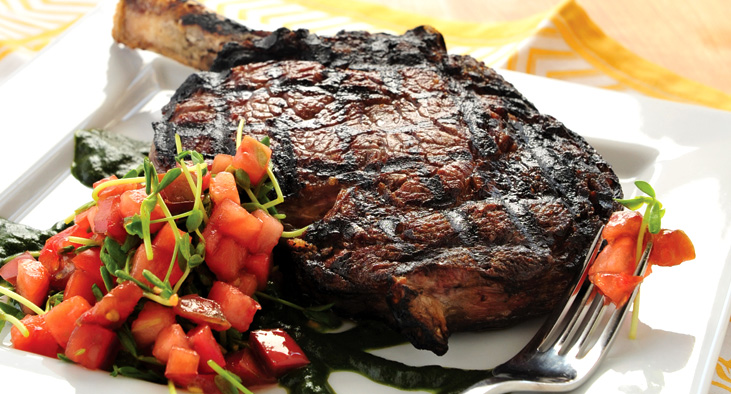
Perfect grill marks are a good sign of a hot grill, heavy grates and a grillmaster who knows what he or she is doing. Here’s how it's done…
Laser-cut Cooking Surfaces
Kalamazoo’s optional laser-cut grill grates are custom-cut from solid slabs of 1/4-inch-thick stainless steel. That means there is a lot of heat mass — and effortless grill marks. Each surface design (meat, fish and veggie) will leave its own specific grill mark pattern. The keys to success are simple:
- The right temperature: Brown grill marks indicate the right grilling temperature. Black grill marks indicate the temperature is too high for the food. Remember that sugars burn. So, the more sugar content, the lower the temperature needs to be.
- Patience: Not only do you need to exercise enough patience to let the grill marks appear, you also need to wait for the food to release itself from the cooking surface. If you try to turn the food over too early, it is more likely to stick. If it sticks, you will probably leave much of the marked surface of the food behind — stuck to the grill. Most foods will release themselves from the surface when it is time to turn.
- Flip the food only once: This is where the skill comes in. You want to flip the food over only one time so that you get the single pattern of grill marks on each side. At the same time, you want food cooked the same amount from each side. It takes experience to determine the right time to flip the food so that you are right at that halfway point.
“Standard” Rod Cooking Surfaces
Kalamazoo’s “standard” stainless steel rod surfaces are still a cut above — using heavy rods to conduct a lot of heat. With the parallel rods in the grates, one additional key to success is needed for perfect grill marks. Rotate the food 45º to 90º halfway through cooking each side for a nice cross-hatch pattern to the marks.
Seasoning Laser-cut Cooking Surfaces
For best results, Kalamazoo laser-cut grilling grates should be kept dark in color. Think of them as you would a good cast iron skillet. You want to keep them black, or at least dark brown. Grates should be cleaned only with a stainless steel or brass brush. Brush them down when the grill is hot, after pre-heating each time you cook. Do not use cleaners (other than the brush). Grates that have sat idle for longer periods may need to be re-seasoned. Instructions for seasoning can be found in your Use and Care Guide.

